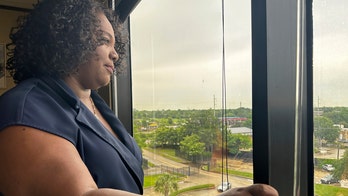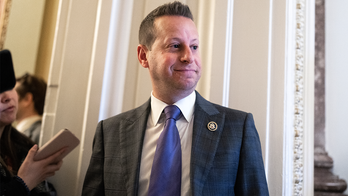
Former Vice President Dick Cheney addresses the Conservative Political Action Conference (CPAC), in Washington, Thursday, Feb. 18, 2010. (AP Photo/Cliff Owen) (AP)
Former Vice President Dick Cheney, who has battled heart problems much of his adult life, is now facing a critical decision on whether he should seek a heart transplant.
Cheney, 69, had surgery last summer to install a small battery-operated pump to help his heart work and allow him to resume an active life. But the heart pump Cheney received is largely used for brief periods to buy potential transplant candidates time as they await a donor organ.
"He has to be thinking about possible heart transplant," said Dr. Manny Alvarez, senior managing health editor of FoxNews.com. "The problem is he's 69 years old. The window of opportunity is ending soon. So the decision will come to this: whether or not he's going to consider a heart transplant or he's going to continue with this pump."
Roughly 5 million Americans have congestive heart failure in which the heart weakens over time -- frequently as a result of heart attacks – and cannot pump enough blood. Heart transplants are one solution, but few patients find a donor and many are too old or sick for a transplant.
The pumps, called a left ventricular assist device (LVADS), are being studied for use as a permanent therapy for people with severe heart failure who aren't transplant candidates.
Alvarez said studies have shown that the two-year survival rate for users of the pump is 60 percent, similar to heart transplant patients.
"He's going to have to make some decisions, his cardiologists are going to have to see if the pump is stable because there are potential complications," Alvarez said. "Remember, he has to be on a blood thinner that has to be monitored constantly and you also have to worry about infection."
A common type of LVAD has a tube that pulls blood from the left ventricle into a pump, according to the American Heart Association. The pump then sends blood into the aorta (the large blood vessel leaving the left ventricle), which helps the weakened ventricle.
Cheney, who is now noticeably thinner, has suffered five heart attacks since age 37, his most recent one occurring in February. He had bypass surgery in 1988, as well as two later angioplasties to clear narrowed coronary arteries, and bypasses tend to last about a decade before the rerouted blood vessels start to clog.
In 2001, he had a special pacemaker implanted in his chest. In 2008, doctors restored a normal rhythm to his heart with an electric shock. After being hospitalized in late June for discomfort, Cheney said he is now "entering a new phase of the disease when I began to experience increasing congestive heart failure."




